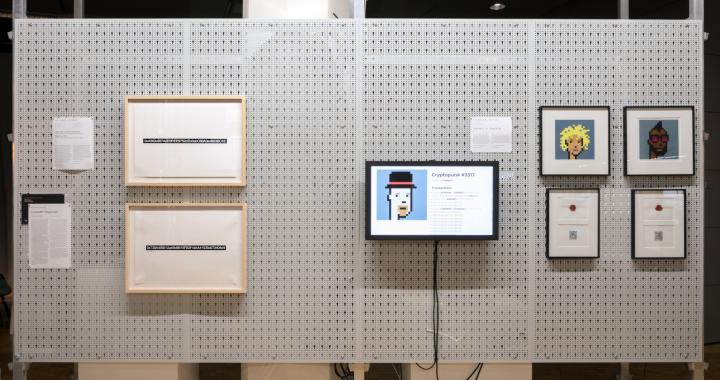Verschiedene KünstlerInnen/Various Artists
cryptoART Playground

- Artists
- Verschiedene KünstlerInnen/Various Artists
- Title
- cryptoART Playground
- Themenbereich
- #AlgorithmicGovernance
- Hashtag
- #Blockchain #DNA #Genotype
- Year
- 2018
- Medium / Material / Technic
- multi-part installation
-
At the exhibition from September 1, 2018 to June 2, 2019
Art and Blockchain? How do they fit together? This overlapping area, known as »cryptoART«, is addressed in a separate section of the exhibition. Since the Ethereum blockchain went online in 2015, numerous smart contract-based, decentralized apps (DApps) have been developed that explore the potential of the underlying technology. »Non-fungible tokenized digital Assets« (ERC721), for example, is one approach to the commercialization of digital art. By storing unique and non-counterfeitable cryptographic keys in a blockchain, both the authenticity and the ownership of a digital work can be guaranteed, and the sale, that is, the transfer of that right, organized.
One of the first projects to implement this technique, in the form of a digital trading card game, were the CryptoPunks. 10,000 unique 32 × 32 pixels images of different characters were marketed through the Ethereum blockchain. By limiting circulation, the rather unspectacular images quickly increased in value.
The first decentralized application, which due to media coverage became more widely known beyond a specialized audience, was the CryptoKitties. The digital cats are not only collectibles, but can also mate with each other and multiply, inheriting visual characteristics which are linked to the cat in the form of a code (the genome).
The principle of “tokenization” has recently become increasingly relevant to the conventional art market. Renowned auction houses and galleries dealing in traditional art are experimenting in this field, as well as evaluating new ways of safeguarding the origin of art (heritage).
The »cryptoART Playground« continually adapts to current developments within the field, displaying changing exhibits, some of which will be sold on to visitors via auctions, or become part of ZKM’s permanent collection.
